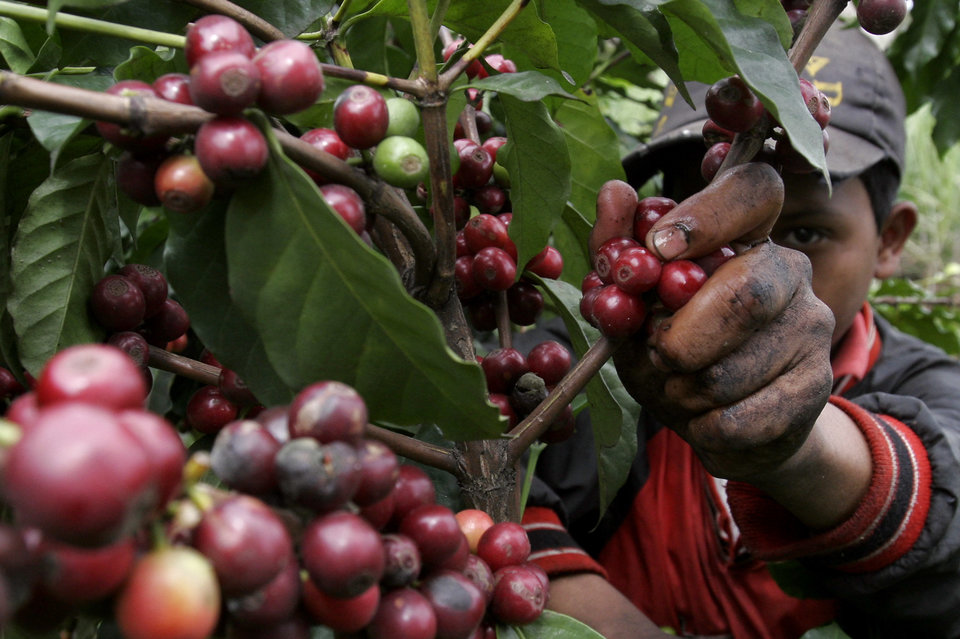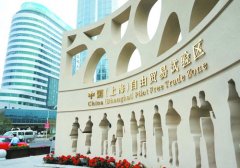The trade pattern of raw coffee beans is changing, with both challenges and opportunities.
Coffee is our love, and global coffee consumption has nearly doubled over the past 40 years to an average of 2.25 billion cups a day, with the United States alone consuming about 400 million cups a day.
But do you know where coffee comes from, how it's made, and how it's delicious in our cups?
Vega Coffee, a partnership between New York and Nicaragua, was born to change the lack of coffee knowledge among consumers. Vega has broken with the traditional coffee business model by selling coffee that is roasted and packaged by growers. As a pioneer in the next generation of specialty coffee, Vega is doing everything it can to change perceptions about coffee sales and bridge the gap between consumers and coffee growers.
The question is very clear.
Vega cofounder Rob Terenzi traveled to Nicaragua alone in 2005 to work for a small, nonprofit coalition of women coffee growers.
According to Trenzi, female workers in Nicaragua are paid only 60 to 75 cents per pound for producing coffee, while roasted coffee can sell for $15 or even $20 per pound when imported into the U.S. market. Trenzi said: "Sadly, the locals in Nicaragua do not have access to their own high-quality coffee, and hotels and restaurants there still sell inferior instant coffee." This is garbage in the eyes of our American consumers."
Trenzi then worked for another local growers 'union for two years, and through his constant efforts and the hard work of local laborers, they created a new marketing model, in which growers roasted their own coffee beans and sold them directly to some local hotels and restaurants. Trenzi says it's a business model that really adapts to local society and allows workers to be self-sufficient.
After returning to the United States, Trenzi, his wife, Noushin Ketabi, and his college friend, Will DeLuca, agreed that they saw a market opportunity in Nicaragua's grower's self-sufficiency business model and were determined to change the current unfair coffee trade model.
"We've been wondering if we could bring grower roasted coffee directly to the U.S. market. Of course, there are many difficulties in achieving this goal." "If you compare the income of coffee growers over the last five to seven years with the retail price of coffee in the end market, you can see that while retail coffee prices have been rising, growers 'income has been decreasing year by year," Trenzi said.
"Then the question arises. Who earned the difference in the middle?" Trenzi asked himself.
In fact, it is not the growers themselves who really profit from selling coffee, but the middlemen and traders.
the weakest link
Coffee beans come from coffee fruits, which grow on coffee trees. After harvesting, coffee growers expose the fresh fruit to sunlight for several weeks until the moisture content of the fruit is reduced to about 11%(so-called "sun method"), or they wash the fruit with water to remove the skin and pulp, ferment the fruit, wash it again, and dry it until the moisture content is reduced to about 11%(so-called "water washing method"). After drying, the grower dehusks and polishes the coffee in some areas. After husking, growers grade coffee according to size and quality. Typically, most growers, independent or affiliated with grower associations, sell these unroasted beans to middlemen, who pay growers according to the quantity, type, and grade of coffee.
After the purchase, the middleman sells the green beans to other roasters, who then sell them to supermarkets or cafes near your home. When buying coffee from a middleman, roasters test the quality of coffee samples first, which is commonly known as the "cup test." After the quality is determined, the baker will bake and sell it.
In this complex supply chain, the grower is the weakest link compared to other links.
Coffee, the world's second-largest circulating commodity after oil, is the sole source of income for millions of grower families. Nearly a third of Nicaragua's population grows or produces coffee for a living, the Guardian reported.
But while consumers pay high prices for macchiato, espresso, or latte, coffee growers get only a fraction of the huge sales profits. Even worse, world coffee prices fell to 115.03 cents a pound in November, hitting a two-year low.
Throughout history, coffee prices have fluctuated greatly in the world market. When market prices fall, coffee growers are the first to suffer. In October 2001, coffee market prices dropped to 45 cents a pound due to a global bumper harvest, a fluctuation that led directly to the appalling "coffee crisis."
Rachel Brooks-Ames, an expert on supply-chain management and the environment for agricultural producers at the University of St. Gallen in Switzerland, points out that most independent growers grow coffee for a living and that if coffee production declines or prices fall, their lives will be on the verge of poverty. The meager income, high cost and unsustainable economic resources make the local social protection system of education, medical care and retirement in the country of origin incomplete. In case of landslides, earthquakes, diseases and other disasters, growers will lose everything.
"Many growers are ignorant of market transactions and do not have sufficient financial reserves to survive market price troughs." "They don't even have the infrastructure to store raw beans until prices recover," Brooks Imus said.
"The middleman can bid at will." She pointed out that most coffee countries of origin did not have laws or protections for minimum purchase prices for coffee. "Growers have no choice but to sell raw beans to middlemen, who decide everything."
Global climate change is making the situation even more difficult for growers. Rising temperatures have allowed coffee leaf rust to spread unchecked. The fungus, which kills plants when contaminated, has swept through much of Central America, leaving thousands unemployed. Oxfam International published a study in 2014 saying that global climate change has increased poverty in countries such as Nicaragua, Guatemala and Honduras. "The duration of seasonal food shortages in local communities has increased from four months in the past to nine months today," the report said.
Coffee free trading platform
Tens of thousands of visionaries from around the world have been fighting for years to solve the dilemma faced by coffee growers. Fairtrade certification systems were established to deal with the effects of extreme coffee prices in the 1980s. Coffee importers or large caterers agree to pay growers a minimum guaranteed amount of $1.40/lb or 120% of the market price, whichever is higher. On the supply side, growers are encouraged to join large grower coalitions to promote all-region sustainability strategies.
Vega went a step further. While paying the minimum guaranteed amount, the company also offers growers in Nicaragua the opportunity to profit directly from coffee roasting and product packaging.
In this mode of operation, De Luca handled technical and marketing issues, while Trenzi and Cotabi moved directly to Nicaragua and opened a baking center there in 2014. Vega buys premium grade coffee green beans from locals and provides financial help to growers to roast and pack coffee at the center. Consumers can order directly from Vega's website, and within days, freshly roasted coffee beans will be delivered to their homes.
"We train growers in the whole process of coffee production, from roasting, cup testing, grinding, packaging to quality inspection. Growers can learn everything about coffee production from us," Kotabi said. Today, the first batch of students graduating from the center have become trainers here.
Vega works primarily with plantations that produce organic coffee and export less than 500- 1,000 pounds a year, with a majority of female workers. Since its inception, Vega has worked with 1500 growers, of whom 40-50 have been trained in baking and packaging skills.
"Our greatest achievement has been to fill the missing link in the supply chain and establish a direct link between growers and consumers." Kotabi said.
Vega's model is an upgrade of the direct trade model. Most importantly, Vega helped growers understand the true value of coffee. "In the past, growers simply did not know that their coffee was popular and that growers had no way of understanding the true value of coffee as a commodity."
According to the company, growers can earn four times as much as they did in the traditional model. Moreover, growers are paid weekly, a model that can significantly improve their living conditions compared to the few payments they received in the past year.
Trenzi points out that participating growers and their families get more financial support, their children get a better education, their families can live in larger houses, and even rent vacant rooms to tourists. "Our ultimate goal is to benefit the local community." he said.
Challenges to the direct trade model
Vega's success reflects the rapid growth of today's direct trade model, with Stumptown and Intelligentsia sourcing, roasting and selling coffee beans directly from growers in multiple locations. Thrive Farmers buys raw beans directly from Latin American growers and retains the growers 'ownership of the beans. In addition, Thrive Farmers pays a portion of sales revenue to growers to help them cope with price fluctuations. The Pachamama Coffee Company works directly with 142000 independent small plantations in Nicaragua, Peru, Guatemala, Mexico, and Ethiopia, where they return a portion of their sales profits directly to the growers.
The ultimate goal of these business models is to eliminate middlemen and allow growers to benefit directly from coffee sales, but at the same time, this model still has certain limitations.
The key to the success of companies like Vega is that the coffee is of such high quality that consumers are willing to pay high prices for their product, meaning that direct trade benefits only those growers who produce high-quality coffee.
Nora Burkey, co-founder and CEO of Chain Collaborative, a nonprofit dedicated to improving the living conditions of coffee growers, said the direct trade model has limited reach and does not work for all coffee growers.

First of all, producing high-quality coffee requires a high upfront investment that not all growers can afford without the help of the growers 'alliance. "There are a lot of growers who can't produce high quality coffee, and these people don't have any support or help at all." How exactly do we help these growers? How can we help growers who are still alone, who have no access to outside information, who have no access to producer alliances?"
Burge points out that many growers still have to rely on middlemen because most of them are more remote or the coffee quality is lower. "If growers don't have the money to ship coffee to processing centers, how do they get rid of middlemen?"
De Luca agrees, arguing that even with minimum guarantees, many growers will not benefit. But he believes that equipping growers with baking skills can help them become self-reliant and earn more income, thereby increasing investment and improving product quality.
Burge also noted that raising incomes isn't the only way to help coffee growers. Large multinational organizations, foreign governments and aid agencies must take stronger measures to help growers cope with challenges posed by factors such as global climate change.
glimmers of hope
Just a few months ago Vega brought its coffee to wholesale farmers markets in Manhattan, New York, and launched a business coffee ordering service to help more office workers drink better coffee.
Vega has also signed a partnership agreement with Global Brigades, an international nonprofit organization that regularly organizes university student volunteers to travel to Latin America and Africa to assist in infrastructure, health care, education and other areas. Vega's founders also plan to build more roasting centers in countries of origin such as Guatemala and Panama and replicate their success in Nicaragua to help more coffee growers.
Although the company is young, Kotabi believes they are changing the lives of coffee growers, and that change is unstoppable. "Rob (Trenzi) has been working with growers in Nicaragua for 10 years, and although some families still can't afford electricity and tap water, they have learned to surf the Internet, they have learned to use smartphones, and they are connecting with consumers in other parts of the world." "In the past, it was really easy to fool these farmers who lived in isolation and accepted whatever price we offered them. We need to change this completely, change the sick traditional coffee trade model."
Original English address:
http://www.huffingtonpost.com/entry/vega-coffee-nicaragua-farmers_us_567091c5e4b0688701db7170
Important Notice :
前街咖啡 FrontStreet Coffee has moved to new addredd:
FrontStreet Coffee Address: 315,Donghua East Road,GuangZhou
Tel:020 38364473
- Prev

85 degrees c general manager Xie Jiannan resigned 85 degrees c to give up scale!
The news of the resignation of Xie Jiannan, the general manager of 85C, has aroused widespread concern in the industry. behind the concern is the confusion of enterprises in the face of today's speed and scale of development. During this period, there are both generality and individuality. However, 85 degrees C chose to practice internal skills. 1 / executives exit with a high profile and leave sadly, which is a true reappearance of the careers of many professional managers. And now there's another one.
- Next

Wanguo Coffee experience Hall will be built in the free trade zone
The fragrance of Wanguo coffee will float in Shanghai Free Trade Zone. The reporter learned from the Municipal Commerce Commission that the first large-scale coffee experience center in the country, the Universal Coffee Exhibition and experience Hall, will be built in the Shanghai Free Trade Zone. It is planned to be built and renovated in March this year, and the first batch of national pavilions will be officially settled in May. The Wanguo Coffee experience Hall is also one of the landing projects of Shanghai-Yunnan cooperation, striving to promote Yunnan to a window for Chinese coffee to show to the world.
Related
- Why are the coffee in some coffee shops not enough after being frozen? What should I make up for my American latte cappuccino coffee after being frozen?
- How much water does it take to steam coffee by hand? Why is the coffee brewing and steaming time 30 seconds? What is the purpose of steaming coffee?
- The suspected drink contains too much caffeine! Overlord Tea Lady responds urgently!
- Starbucks rejects antique paper coupons?! Netizen: Missed marketing opportunities!
- What ratio of water temperature and ground does the smart cup method use to press coffee? The difference between brewed coffee and filtered coffee?
- What is the standard process for the purpose of coffee cup testing? What is the difference between hand-brewed coffee and cup testing?
- How to use hand-brewed coffee paragon small golden balls? How does cold coffee lock in the aroma of coffee?
- Is American coffee black? What is the difference between American coffee and drip coffee?
- Unexpected! Well-known tea beverage brand Lele Tea will withdraw from the Zhengzhou market!
- Starbucks enters the fashion and beauty industry?! Netizen: Give me an ice American eye cream

